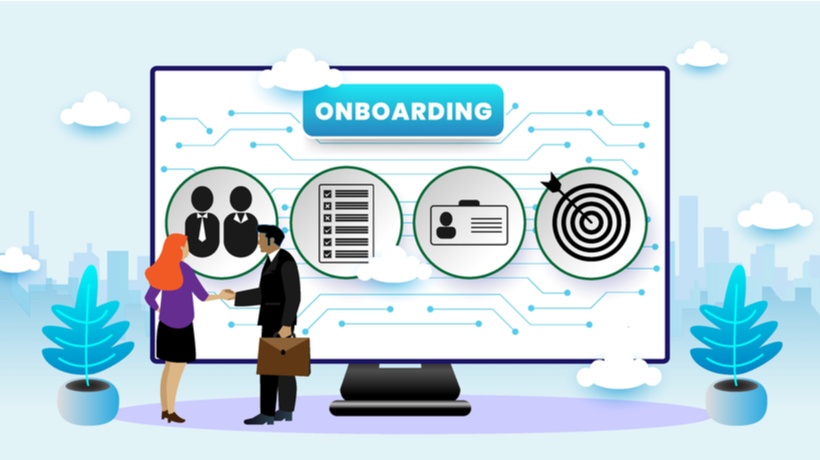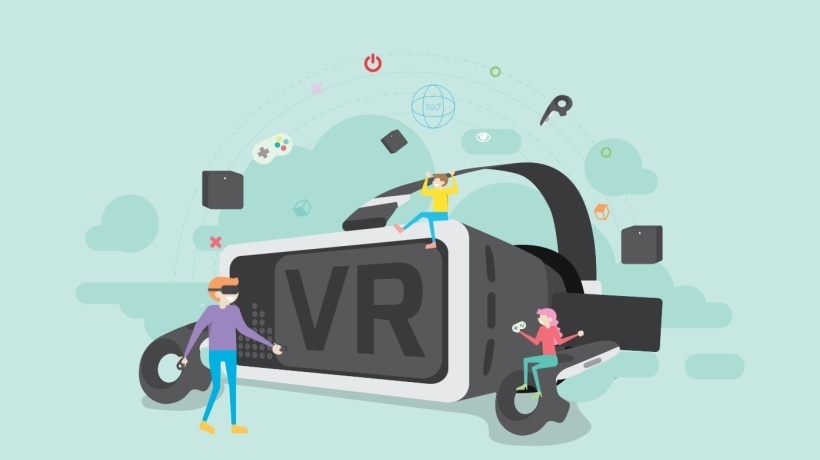Is Gamification The Answer To Effective Employee Onboarding?
I accepted a new position as a Director. Upon arrival my first day, I was informed that “Corporate” did not approve my position and though it would not affect my pay, my title was going to be “Nurse Manager.” It made no sense. After breaking the news to me I was led to my office and then my new boss left stating, “Get settled in.”
I sat at my new desk staring at bare walls for the next three hours. Finally, my phone rang, and my boss said, “Meet me in the cafeteria for lunch.” I have never been so grateful for a phone call.
At lunch, I asked if I could visit the units I would be tasked with running. “No, we have not told the leaders that you are taking them over. We want you to keep a low profile until the logistics are worked out.”
I spent the afternoon staring at bare walls. Finally, 5 pm arrived and I left my first day without speaking to anyone, confused by the entire episode. I regretted accepting the position.
That is from what Keith Albert wrote three years ago [1]. Now we are amid the Great Resignation and, hopefully, organizations have an altogether different approach to onboarding.
Onboarding is no longer just the routine of welcoming a new employee and expecting them to stick around, regardless. Instead, at least in woke companies, the process involves a carefully structured plan that can last a year and involve many people in multiple functions—with Learning and Development leading the way with gamification.
Why Onboarding Matters
According to Brandon Hall Group’s Impact of Strategic Onboarding Study, companies suffer a 12% voluntary attrition among new hires, and most attrition occurs within the first 6 months in 51% of companies.
Not surprisingly, onboarding is a top business priority today. Mark Stein and Lilith Christiansen, authors of Successful Onboarding [2], affirm: “Successful onboarding is far more than traditional orientation in new clothes; it is an innovative strategic program that can boost a company’s bottom line and improve its future prospects.”
They caution: “When top-notch people...become disillusioned, a firm’s brand becomes tarnished in the eyes of prospective employees...and it becomes even more difficult to attract the best talent.” The need is to “excite new hires so that they feel motivated to address their challenges enthusiastically.”
Effective onboarding is a win-win for both employers and employees. While companies gain from the “onboarding margin,” employees appreciate the opportunity not just to earn a paycheck but also to attain respect, achievement, and “self-actualization.”
The book names the 4 pillars of successful onboarding:
- Talking about the organization’s values and work culture “results in happier, better-adjusted employees who work effectively.”
- Before they have a chance to pass judgment on their decision to join, “new hires need to make the right connections.”
- Often used as a late-career reward, career development can be a “powerful means” to achieve loyalty when integrated into onboarding.
- Most importantly, new employees need to be briefed about business strategy because “the more versed employees become in the strategy, the more they begin to regard their everyday work through that lens.”
According to research by Glassdoor [3], employees who rate their onboarding experience as “highly effective” are 18 times more likely to feel highly committed to the organization; 91% of them feel strong connectedness at work; 89% feel strongly integrated into the company culture; 49% contribute to the team within the first week. That’s what makes onboarding a serious business investment.
Welcome The Gamers
In 2019, there were 2.5 billion gamers, one third of the world’s population and growing at over 5% year on year. They spent more than 7 hours a week playing video games. Those in the 26-35 age group made up 40% of the gamers and were most likely to play at work. The average gamer was 34 years old. Adult women players (33%) outnumbered boys under 18 (17%) when it came to video games. As much as 46% of the gamers were female (average age 34; male average age 32). And they have been playing for at least 16 years.
Chances are most members of your team are avid gamers, as are those who are planning to get on board. While welcoming them, why not serve them the flavor they like most: gaming!
Experts predict that increased use of gamified onboarding programs will make it more exciting for new recruits to get to know the company, the performance expectations, and how to meet those best. Team games can facilitate interactions and quickly establish connections, minimizing the awkward phase of integration. Gamified onboarding can also help eliminate bias while onboarding.
Learning Management Systems (LMSs) will have a greater degree of gamification, making it possible for organizations to leverage the power of productive competition, and track employees’ progress to better match efforts and achievements with rewards.
As the Brandon Hall report puts it, gamification helps meet the daunting challenge of increasing “knowledge retention and employee engagement while shortening the time it takes to get people up and running.” It can “engage learners in the onboarding experience and help them retain more information.” According to the onboarding study, “13% of companies currently use gamification in onboarding, and 34% say they plan to add it over the next 12 months or so.”
Among companies already using gamification for onboarding, 62% say their new hire engagement is up (versus 48% of those that do not use gamification), 47% say their new hire retention is up (30%), and 55% have shortened time-to-proficiency (30%).
In his book [4], Karl Kapp observes: “Games provide the license to think outside of normal parameters, to add a little bit of fantasy or surrealism, and to force people to think in different ways.” Gamification presents an engaging aesthetic interface to learners, including new hires. It is an intensely motivational method for conveying corporate training and education.
Get A Running Start
Even those organizations that are convinced about the power of gamified onboarding at times wonder if gamification would turn out to be an expensive, time-consuming reinvention of the learning wheel already in place.
This is what Animesh Kumar, President-HR & Transformation at Zee Entertainment, says: "Our learning at ZEE while building the digital induction module by gamifying company values and competencies is that one needs to 'sweat the design' for the entire learning process to be powerful and successful."
The ideal solution to get going would be to start with a template or framework that can be easily customized to fit their onboarding needs.
For example, this framework for gamified induction has a series of themes ranging from space exploration to cyberpunk that can shape your narrative. The framework brings together sleek, minimal screen layouts for content with a library of layouts. It also has an assortment of game mechanics that can be selected to amplify your narrative and enrich the induction experience.
Animesh Kumar is happy to have used the framework. "Keeping gamification at its core, the framework designed by Upside Learning intrigued teams across levels, deeply engaging them with the digital induction module. The impact created by this experience is one that transformed our entire outlook toward designing Learning and Development modules for employees across the organization.”
If Keith starts a new job today, probably he would be welcomed with gifts and grand announcements on social media. He may not notice how bare the walls are because he would be too engrossed to look up from the laptop, enjoying and absorbing his gamified onboarding. And at the cafeteria, he is likely to tell his manager, “I have a fair idea what is going on in the units. I think I should lie low for a while and wait for the right time to take over.”
After all, gamification is not about entertaining diversion. It is about focused initiation.
References:
[1] What is the worst 'first day at a new job' experience you have ever had?
[2] Stein, Mark A., and Lilith Christiansen. 2010. Successful Onboarding: Strategies to Unlock Hidden Value Within Your Organization New York: McGraw-Hill.
[3] Ongoing Onboarding: How to Make the First Six Months Count
[4] Kapp, Karl M., 2012. The Gamification of Learning and Instruction: Game-based Methods and Strategies for Training and Education. San Francisco, CA: Pfeiffer.










